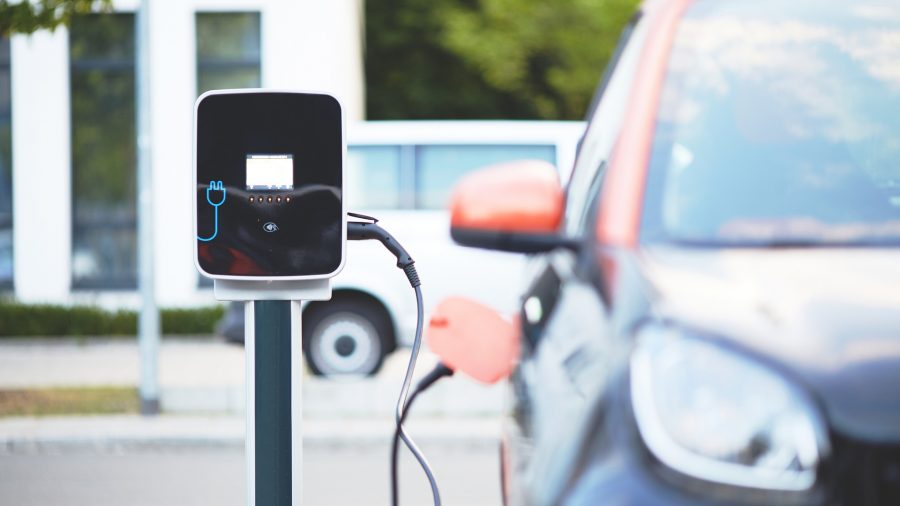How many times have you pulled up at a service station to buy fuel? It’s just one of the many mundane tasks of a vehicle owner. Now electric vehicles are changing the way we think about “refuelling” entirely. We have to think about charging rather than fuelling, where to charge, and how much charge our vehicle really needs.
Charging an electric vehicle
Charging an EV is not the same as refuelling a traditional vehicle because it is more complex. For example, charging time depends on:
- Type of charger
- Car model
- How full the battery is.
There are three levels of charger type found at different locations and with a specific purpose.
Types of EV chargers
| Level | Type of charger | Location | Range | Purpose |
| 1 | Existing power point used with a special cable supplied with the vehicle | At home | Adds 10 to 20km of range per hour |
Top up only Will not fully recharge an EV overnight |
| 2 | Dedicated AC EV charger at up to 7kW | Where vehicle is parked for a while – homes, apartment blocks, hotels, workplaces, shopping malls | Adds up to 40km of range per hour |
Tops up average daily use in an hour Full recharge overnight |
| 3 |
Dedicated DC EV charger up to 350kW 50 kW is Fast 120 kW is Tesla Super Charger 350kW is Ultra-rapid |
Commercial premises and roadside locations |
25kW adds up to 150km of range per hour 50kW adds 50kms in 10 mins 350kW could fully recharge in 10-15 mins |
Full recharge No vehicle can currently take 350kW |
Source information only: Electric Vehicle Council
Unexpected benefits of charging electric vehicles
Charging an EV can have a few benefits for the grid, though you may not buy an EV for that purpose. At the moment we don’t know where EVs are travelling and how much energy they draw from the grid. This will start to change.
As battery power increases, so cars can be used as facilities for mobile energy storage. Bi-directional charging means plugging the battery into the grid so it can take energy or add it back to the grid. This may stabilise the grid as well as making it cheaper to run the vehicle
How much charge does an electric vehicle need?
The default charge is always set at 80%. This is because it takes much longer to charge the final 20% than it does the first 80%. The official charging rates above apply only at the start of the charging session. Once the battery is half full, or earlier, the rate of charge always drops. This is designed to protect the battery.
A 350kW charger theoretically charges a vehicle in 15 minutes and adds 200km of charge in 8 minutes. In fact, no vehicles on sale in Australia can even take this charge rate. Elon Musk, always outspoken, says 350 kW is a battery killer. Tesla Superchargers are set at a more modest 120 kW.
In Australia, most public EV chargers take 3-6 hours while normal power outlets take more than 12 hours.
Where to charge an electric vehicle in Australia
Australia currently has fewer than 2,000 public charging stations and only 250 are fast charging. This does not sound like many but, given we bought 6,718 EVs in 2019 and 2,216 in 2018, that’s only a few EVs per charging station.
To offer more charging facilities for EVs, the NSW government, together with NRMA, is setting up 50kW fast chargers all over the state. These will allow drivers to fully charge in about 40 minutes.
For some time, people have claimed “range anxiety” and lack of charging infrastructure stands in the way of adopting EVs. All this despite the average Australian driving only 35 kms per day. After the fast charger network is completed in 2020, electric vehicle owners should never be more than 150 kms from a charging station.
Petrol thinking vs electric thinking
Whilst the NSW fast charging network is good news for EV owners, some argue that simply providing fast charging networks is a kind of “petrol thinking”.
Petrol thinking dictates you wait until the fuel tank is starting to empty, then find a service station and fill it up again. With an EV, you would wait until you were low on charge, and then fast charge the battery to 100%.
In fact, it does not have to work this way. The idea is to charge the EV while you are parked for some other reason. The best reasons are sleeping, working at home or in the office, or going for an extended shopping spree. It means charging becomes a secondary task and it can be fairly slow, say level 1.
If you want to charge while at a café or restaurant, or on a briefer shopping trip, you might need fairly fast charging, say level 2. In this case, you don’t have to charge the vehicle even 80%. You might just want a top up, for your 35 kms a day.
As one expert wrote, chargers should be at “our natural life destinations”, rather than at roadsides. In some ways, it’s like plugging in your mobile phone wherever you are. This is electric thinking.
Ultimately there is more to charging an EV than you may have thought. Demand for electric vehicle charging stations is causing us to rethink our petrol thinking. We need to come up with innovative ways to fit charging our electric vehicles around our lives instead of the other way around. If you’re considering buying an electric vehicle, you might want to check out: Should I buy an EV?


your opinion matters: